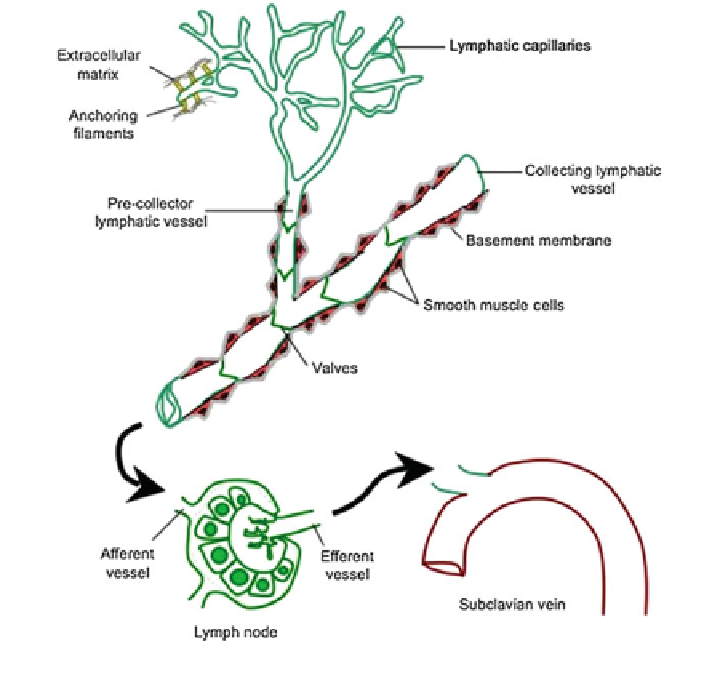Biomedical Engineering Reference
In-Depth Information
Fig. 1
Schematics showing lymphatic flows. Reproduced from [
18
]
lymphatic network reside complex structures known as lymph nodes that are fed
by an upstream afferent lymph vessel. The lymph node itself can be basically
divided into an outer cortex and an inner medulla. The surrounding fibrous capsule
extends into the interior structure of the node forming trabeculae. Thin reticular
fibres form an interior supporting network called the reticular network. Lymph
fluid passing through the node experiences a degree of chemical and biological
processing, in particular through interaction with B-cells and T-cells in the cortex,
which represent a significant element of the body's immune response. However the
variety of entities present in a lymph node makes it difficult to isolate the role
played by each specific component in the overall behaviour of the node. Lymph
fluid passing through the node drains into a single efferent lymph vessel, which
itself may be afferent to another node further downstream. All lymph vessels
ultimately drain into one of two lymph ducts; the right lymph duct which drains
the upper right side of the trunk, neck and head together with the right arm; and the
left or thoracic duct which drains the rest of the body. These ducts return lymph to
the blood stream, emptying into the subclavian veins.

Search WWH ::

Custom Search